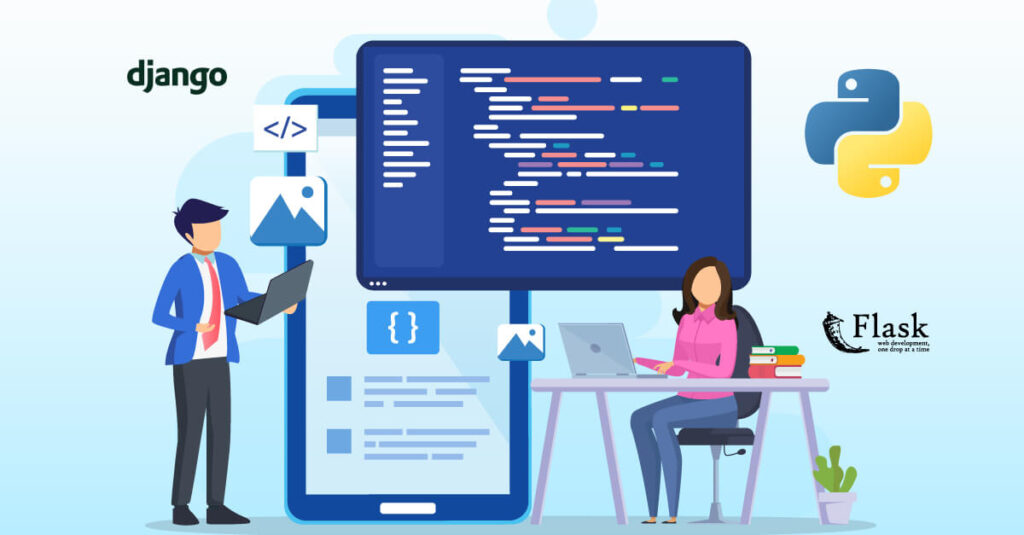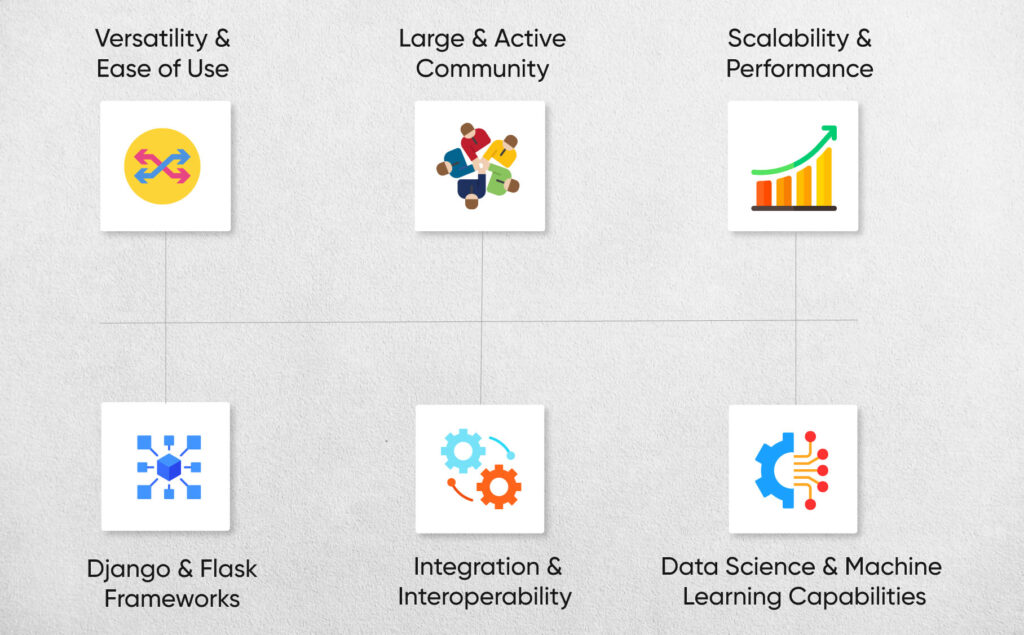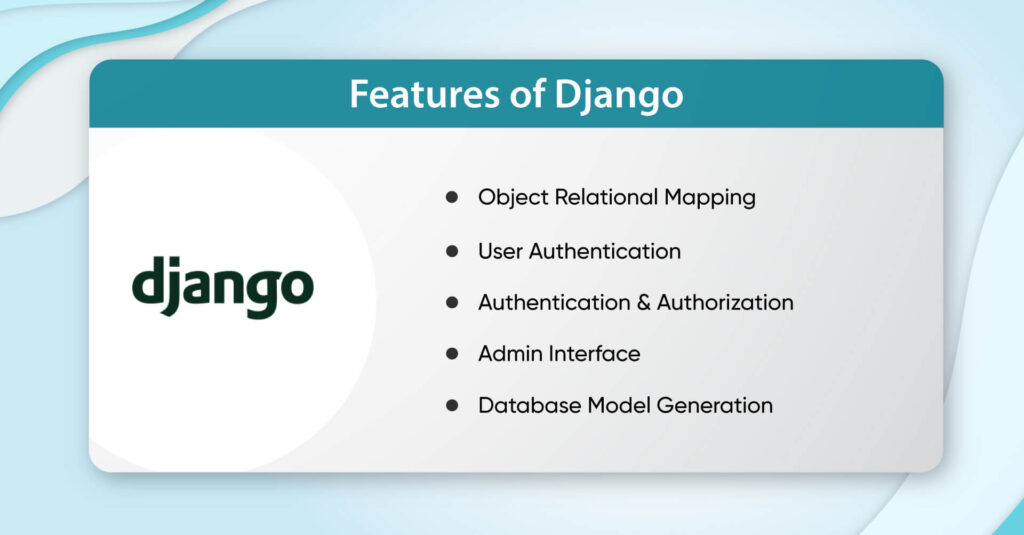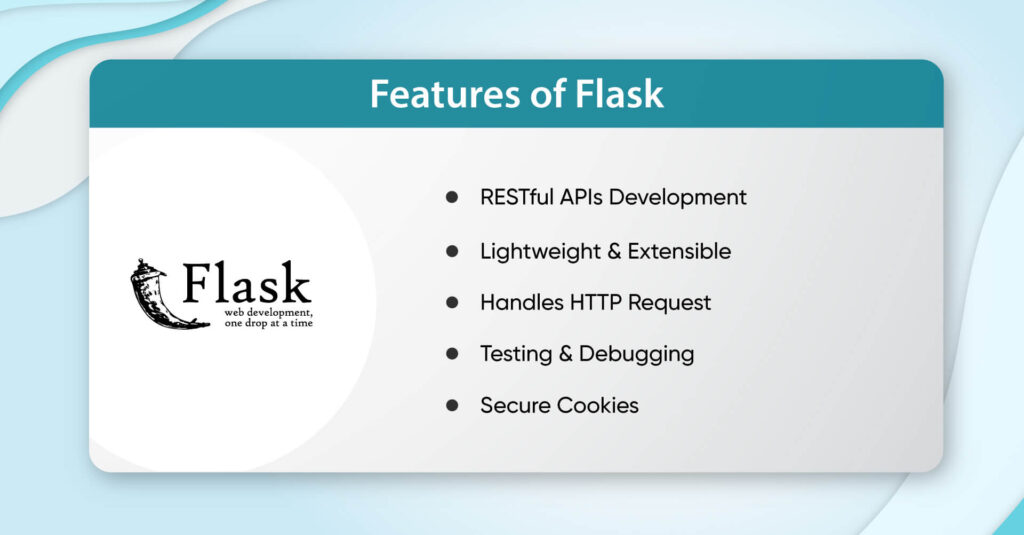6 Reasons To Choose Python For Backend Development

In the 21st century, people prefer to focus on creating logical solutions for complex problems rather than focusing on writing large and complicated code. Python is a language that offers many in-built libraries and smaller code sizes, making it popular with developers. Lots of websites use Python for back-end development because of the versatility of Python. These functionalities of Python let people concentrate on their logic instead of coding.
We live in the AI world, where developers focus on creating faster and more automated applications. Python helps complete AI and machine learning tasks with few lines, leading to faster development. Moreover, Python for the backend proves to be a blessing for web developers because, with Python, tasks like website development, database handling, and front-end designing get easier.
As a matter of fact, Python for Beckend web development provides practical frameworks that simplify web development and create high-quality websites.

1. Versatility and Ease of Use:
Python has several key advantages that make it a popular choice for developers. Python backend development is widely used in web applications and RESTful APIs due to its simplicity and flexibility. Instead of curly braces, Python uses indentation to organize code, making it easier to grasp. Python is similar to natural language, which also makes it popular among beginners. Debugging and maintenance with Python are more accessible because of its simple coding syntax.
Python is an oriented language that supports all four pilers of OOP encapsulation, inheritance, polymorphism, and abstraction, resulting in high code readability. Python supports multiple frameworks. FAST API web framework is mainly used for fast API creation, and Django for complex web API development.
With Python for web development, one can build an entire website, saving developers time and effort. Python, for back-end tasks, offers a smooth development experience and quick prototyping for small projects. At the present time, many popular websites depend on Python for data handling, user authentication, API development, and front-end design. Python not only makes it ideal for creating application prototypes but also provides the creation of ideal prototypes for any application. Furthermore, with Python, we can build prototypes for web applications quickly and cost-effectively.
2. Large and Active Community:
Python has a more significant global community where software developers communicate and also contribute to the community. Python was developed by Gudo Vann Ransom in 1991, and from that time, the Python community grew. People from different backgrounds, knowledge, and locations contribute to the Python community. As a result, this collaborative work has created multiple frameworks, libraries, and tools, making Python popular among developers. Python has a supportive community and plenty of documentation, making it a good option for backend developers looking for resources while working on their projects.
Python community is Actively helping developers worldwide through platforms like Stackoverflow, Discord, Github, and many more. Working on Python projects has become more accessible because of these available resources, and that’s why people around the globe are showing interest in contributing to the Python community.
On the contrary, to develop different projects, plenty of inbuilt libraries and frameworks are present in Python. Python backend developers often use accessible frameworks like Django or Flask to speed up the development process and build robust web applications. Working on a machine learning task is easier with a small amount of code because Python provides vast inbuilt libraries for machine learning tasks like Pandas, Numpy, Tensorflow, Scikit-learn, and Keras.
3. Scalability and Performance:
Scalability is the ability of an application or software or any system to efficiently and effectively handle increasing workloads like data or users. While developing any application, the user and data increase daily, which results in application crashes. Python has good scalability to handle any application working. Python offers multiple load management techniques to address such situations to handle extensive data and multiple users. It also provides facilities like the Asyncio feature, which helps handle users asynchronously. Python also has Multithreading. Using that developer can increase the speed of the application by implementing multiprocessing.
Python in backend web development provides many features and techniques to optimize performance, such as a list comprehension method to iterate list items; using this technique can save time and memory. Python has Numpy arrays, which are 50 times faster than lists for processing items. Developers can use the built-in functions of Python to write highly optimized code. It has object-oriented features that allow developers to increase code reusability.
Python is a cross-platform programming language that makes it easy to build applications that run on different operating systems. Some of the most popular applications built with Python include fraud news detection, Stack Overflow, Discord, LLM models, YouTube, and many more.
Python can be used to deploy web applications on multiple servers. It proves to be a powerful language by providing multiple web servers for deploying Python applications. Python web servers effectively handle HTTP requests and responses, including applicable status codes. While using FAST API, we come across Uvicorn, an ASGI server. Also, Guvicorn is well known for his process management capabilities. Backend web development frameworks like Django simplify backend development with Python, known for its scalability, speed, and security.
4. Django and Flask Frameworks:
With Python for backend web development, developers can efficiently work with databases, manage resources, and easily handle smooth communication between frontend and backend APIs. Python Django is an open-source web framework well known for backend development as it provides more scalability, reliability, and security. Django offers multiple features for a backend web developer, like ORM (Object Relational Mapping), user authentication, Admin panel, Django forms, Django templates, and more. The REST framework of Django, which has a complete suite of features for RESTful API development with its function-based and class-based views, includes built-in libraries for authorization, API generation, serialization, and database model generation.

On the other hand, Flask is another popular framework because of its lightweight and flexible functionality. Also, Flask is more independent, so many beginners prefer it. Unlike Django, Flask has only the necessary features to handle HTTP requests and responses, which makes Flask a light application. With Flask, developers can easily customize project structure and database design.
Python offers these open-source and highly reliable frameworks for developers to build scalable and featured web applications. Each framework has its use cases, pros, and cons. Like in Flask, there is no inbuilt ORM for database handling, a feature readily available in Django. Flask is most commonly used in single-page applications because of its lightweight nature, while Django is preferred for more complex and big projects. Still, both Flask and Django are excellent open-source, free, quick, Python-based frameworks designed for building web applications.

5. Integration and Interoperability:
Python is platform independent language which means we can write code on one platform. It can be run on another as well with fewer changes. Software developers must ensure programming language integration with third-party libraries, databases, software tools, etc. Backend developers often choose Python back-end web development tasks as it integrate smoothly with databases and other third-party libraries.
Python for backend back development provides strong integration capabilities with other technologies, providing many benefits like effortless web development, code reusability, data analysis, visualization, etc. Python’s integration with big data frameworks and libraries like Apache Spark, Apache Hadoop, elastic Search, Matplotlib, Numpy, and many more. Python easily integrates with SQL databases such as MySQL, Postgres, and SQLite. It also has libraries like Requests in Python makes HTTP request, handle responses, and extract data, and third-party libraries like BeautifulSoup for web scraping, making it a powerful choice for developers.
Python for backend web development allows developers to build efficient APIs and handle data processing tasks effectively. Python backend web development provides frameworks like Flask; Django easily integrates with javascript libraries like Angular, React, and Vue.js. Python’s web frameworks support integration with Javascript’s Ajax allows specific web page content updates without reloading the complete page. Also, Jinja2 is the templating engine that allows developers to render dynamic content on the server side, which is integrated with javascript libraries afterward
6. Data Science and Machine Learning Capabilities:
In today’s world of AI, Python stands out as the top choice for data science and machine learning projects. Python is a famous language for machine learning and data science tasks. Python provides many in-built libraries designed to analyze, manipulate, manage, and preprocess such raw data. By using Python backend capabilities, we can train machine learning models on this preprocessed massive data to make accurate predictions for the future.
Python provides built-in libraries that help researchers, data scientists, and engineers handle data and train advanced machine-learning models effortlessly.
Python provides many useful libraries, such as TensorFlow, a Python library for building and training neural networks, mainly used for deep learning. It provides Numpy, which is the same as a list in other languages but has a 50 times faster speed in item processing, speeding up the process of scientific calculations and analysis. Also, Pandas is the library that simplifies data cleaning, transformation, preprocessing, and data management for analysis and model training.
Social media websites, online stores, and digital businesses generate vast data in today’s digital world. Python provides a set of libraries to handle such massive data, which allows developers to train advanced models on this data. Python plays a vital role in finding valuable insights from this data, which can then be utilized to improve business capabilities, enhance customer satisfaction, and seize various opportunities in the digital world.
LLM models are popular nowadays, which is evident in Python’s importance in NLP(Natural Language Processing) applications. These models depend heavily on Python for natural language processing and machine learning model training. An excellent example of Python’s impact is in automated customer support systems, like which shopping websites use, where Python is used to create chatbots that assist customers efficiently.
Final Thoughts:
Python is an excellent choice for backend development due to a few reasons. Python is straightforward to learn and code. It has a vast community that helps developers with support and extensive resources like the deep documentation they have provided. Python is versatile and scalable, handling tasks like machine learning, web scraping, and web development.
It smoothly integrates well with other tools databases, and external libraries. Python enables businesses to handle large datasets efficiently and extract valuable insights, resulting in better decision-making. Python’s simplicity, versatility, and active community support make it an excellent choice for backend development, allowing developers to build robust and innovative solutions to real-world problems.
Frequently Asked Questions
Picking Python for back-end development is clever because its code is easy to understand and write. Python uses indentations for code readability which makes it manageable. Many resources are available to learn Python, making it a popular choice for beginners and experienced developers.
Python helps you to make reusable code using functions. For making the backends of websites, Python has tools like FAST APIs and Django that make building apps more accessible. Identifying and rectifying errors is simple with Python’s interpreter. So, if you want to build the hidden parts of websites quickly and flexibly, Python is a great choice.
The combination of Python and Django is an excellent duo for building a website’s backend. Python’s user-friendliness helps developers of different expertise. Django has valuable qualities that make development quick, and Python’s community and documentation give enough help. To make complex website development faster, this duo helps a lot. If building a website has to deal with a database, server-side authorization, frontend, and APIs Django and Python have multiple features.
Python is excellent for making the backend of a website solid and practical. Python is easy to learn. That’s why anyone can quickly learn it. There are lots of helpful people and resources online if you need help. Developers can use web frameworks like Django or Flask to quickly build the backend part of a website using inbuilt libraries and frameworks. Python has many tools for various jobs, such as creating websites or doing machine learning. It can also help you make pieces of code you can use again later. With Python, you can create solid and smooth behind-the-scenes systems for various projects.
Lots of new businesses and tech companies use Python for backend development. Python is famous for making websites and web apps using frameworks like Django and Flask. Python can be used for almost all the backend tasks. It can connect strongly between the parts you see on the screen and the stuff happening in the background. Due to its versatility, simplicity, and robust capabilities, Python remains a top choice for developing different types of projects.
Hire Dedicated Python Developers Today!





This site was… how do you say it? Relevant!! Finally I have found something which helped me.
Appreciate it!